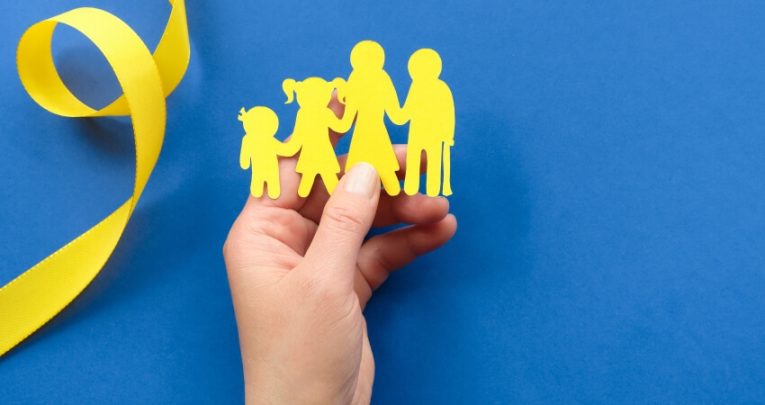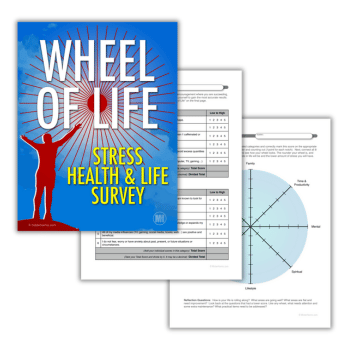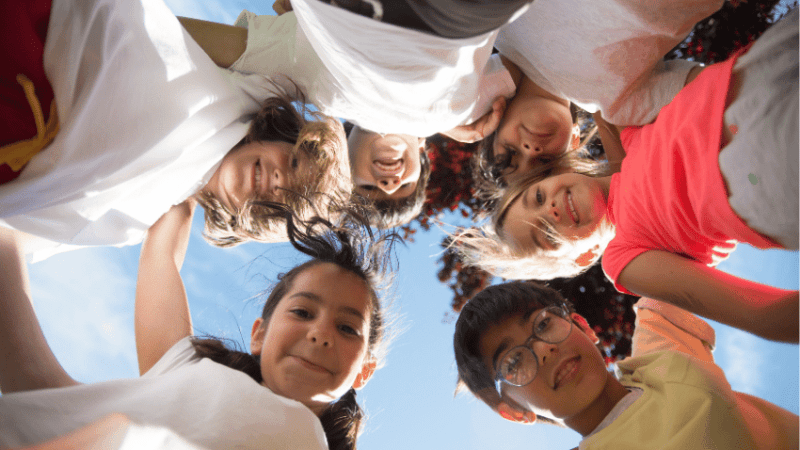Refugee students – How can you help a teen who’s lost everything?

Planning around the needs of students from refugee families can be hard – but as Hannah Day explains, there are certain things teachers can do that will always prove helpful…

- by Hannah Day

We’ve all watched the war in Ukraine unfold with horror, but thus far it’s remained largely at what feels like a helpless distance.
However, that distance has now shortened for some of us, due to the arrival of new students from Ukraine in many classrooms – including my own.
Sadly, the presence of refugees in schools across England is nothing new. I recall welcoming new classmates from Serbia back when I was a pupil myself, and more recently we’ve seen children arrive from Iran, Iraq and Syria, as well as many other countries.
Whether you’ve become used to welcoming the children of displaced families, or are educating a refugee in your class for the first time, there are some key approaches that we can all take.
1. The practicalities
Firstly, we need to make the practical elements of being in school as simple as possible. After all, if we don’t support refugees in managing their day-to-day lives at school, we’re setting them up with an extra layer of difficulty right from the beginning. To help them get off to a good start, pay attention to the following:
Pronounciation of names
You may need to record some names phonetically, at first. I’ve found that many students choose to simplify their names, but this should always be their choice. If in doubt, see if your English or MFL teachers can assist you with any pronunciation issues rather than the student themselves, as such enquiries may make them feel self-conscious.
Religion
Make sure you know not just which religion – if indeed any – they follow, but how they practice. We understand that the Catholic church and the CofE are different, so apply that same mindset to all other faiths. As part of their settling in, ask the student to note down anything that might need to be facilitated for them for religious reasons, such as dietary requirements, adjustments to uniform or prayer spaces.
Orientation
See to it that maps of your school are clearly presented, and also easily available as digital versions that will allow admin staff to add notes in the student’s own language. There’s no point labelling the toilets in English only if their English is poor.
Equipment
Many will have arrived in this country with nothing. Make sure there’s a lead member of staff responsible for them, who can provide them with the necessary stationary, uniform items and so forth.
Use picture labels
Take a walk around your school. Is there any signage that could use a picture label? This is a fairly common practice in primary schools designed to help pupils with emerging English skills, and it can be applied here. Note that it can be especially useful in lessons where specialised equipment will be used, such as art and science.
Buddy system
Above all, give the student a ready-made friend. This should be a respected and acknowledged role to give it status. While there may be other refugees at your school, perhaps from the same country, it’s generally best for a ‘buddy’ to be an established student with a good set of friends, so that all students can mix freely.
2. Their emotional needs
Now that they’re able to find their way and establish links with other students, you’ll need to consider their emotional needs. We all know that relaxed and positive students achieve well, and refugees will be no different – so make sure the below areas don’t escape your attention.
Help them make links
Make space in the day for any refugees from the same country to meet. They may be in different year groups, but just having a chance to talk in your own language to someone else about experiences common to both of you can be an important source of relief.
As new refugees join your school, make sure they’re linked in with others already attending. This activity should be discrete from the school timetable – i.e. taking place at lunchtimes or at after-school clubs – since it’s important that they’re able to become part of the wider school for the majority of the day.
Say ‘hello’ their way
Encourage a basic use of the student’s first language across the group, such as the words for ‘hello’ and ‘goodbye’. This should be embedded and said without fanfare. Don’t draw attention to the fact, as it may embarrass the student or make them feel singled out. Just drop it in casually where you can.
Focus on strengths and achievements
Bear in mind that these students will be settling into a whole new way of learning. I’ve been interested to finding how out my subject, art and design, is typically delivered in Ukraine. Much of what we do isn’t actually covered in their specifications, with the upshot that Ukrainian students can initially find themselves resistant or confused in lessons. What areas or skills do they excel in? Make sure to celebrate and acknowledge these.
Share common experiences
While very few of us will have been forced to leave our homes with little or no warning, we can all relate to the idea of experiencing change we haven’t welcomed and what it’s like to endure times of stress.
Don’t be afraid to talk about this. Simple opening statements, such as ‘I don’t know what you’re experiencing or feeling, but I do remember when…’ are a good way of making an emotional connection without belittling their experiences, or comparing them to yours.
Celebrate what they bring to the school
As you get to know them, consider how you can incorporate their knowledge and experiences into your lessons. Our Ukrainian students have excellent technical skills, which is why we’ve asked them to help their fellow students with various tools via our digital editing programs. That way, I even get to learn some new skills myself.
Make the process of welcoming new people to your school part of its ethos and a core value. Explicitly communicate this to students, staff and parents, clarifying how refugees should be welcomed both in school and throughout the wider community. Make sure the school is setting the tone.
3. During lessons
Now that your student has settled in in both practically and emotionally, you can start to teach them. Education is our game, but we should recognise that the two pastoral stages outlined above must come first. Rush, and you may experience a range of unexpected problems.
Pre-translate key vocabulary
Make sure you’ve prepared a glossary of key words with translations. Ask them to work on a number each week. They may need support staff to assist them – don’t expect them to be able to do it all alone.
Avoid idioms
Yes, they’ll be ‘in at the deep end’ at first, but phrases like that won’t translate. Keep it simple.
Communicate purpose and targets
Try doing this as simply and as clearly as possible, translating just a few key points. If the student can know why they’re being asked to complete a particular lesson activity, it will help with buy-in – particularly when the educational approaches you’re using are vastly different to what they might have experienced previously.
Web translator apps
Finally, there’s no shame in getting some help from an app. Download one and use whenever all else fails.
With these practical suggestions, refugee students should be able to manage the school day easily, and soon become as much a part of your school as any other student.
External assistance
If you’re struggling with broader communication issues, it may be that the student requires specialist intervention beyond what your school is able to offer. Here are some potential sources of support that may be able to help…
PACE
Developed by Dr Dan Hughes, this approach is well-suited to children who have experienced stress. The name stands for Playfulness, Acceptance, Curiosity and Empathy, and the aim is to build trust and relationships which will lead to better outcomes.
ddpnetwork.org
Zones of Regulation
If you’re finding that your new students are presenting disruptive emotions, then this strategy can be used to help them categorise and understand how they’re feeling, ultimately leading to scaffolding supportive measures.
zonesofregualtion.com
Harvard University – Reliance
Getting children to draw or list both the challenges they face and their ways of coping as two sides of a see-saw can help them see which is more heavily weighted. You can then help them manage each side one by one.
developingchild.harvard.edu
Hannah Day is head of visual arts, media and film at Herefordshire and Ludlow Sixth Form College, where she has responsibility for overseeing the department’s teaching and strategic development. Browse resources for Refugee Week.










